Affiliate links on Android Authority may earn us a commission. Learn more.
Google Pixel 9 vs 9 Pro vs 9 Pro XL: What's the difference?
Published onFebruary 7, 2025
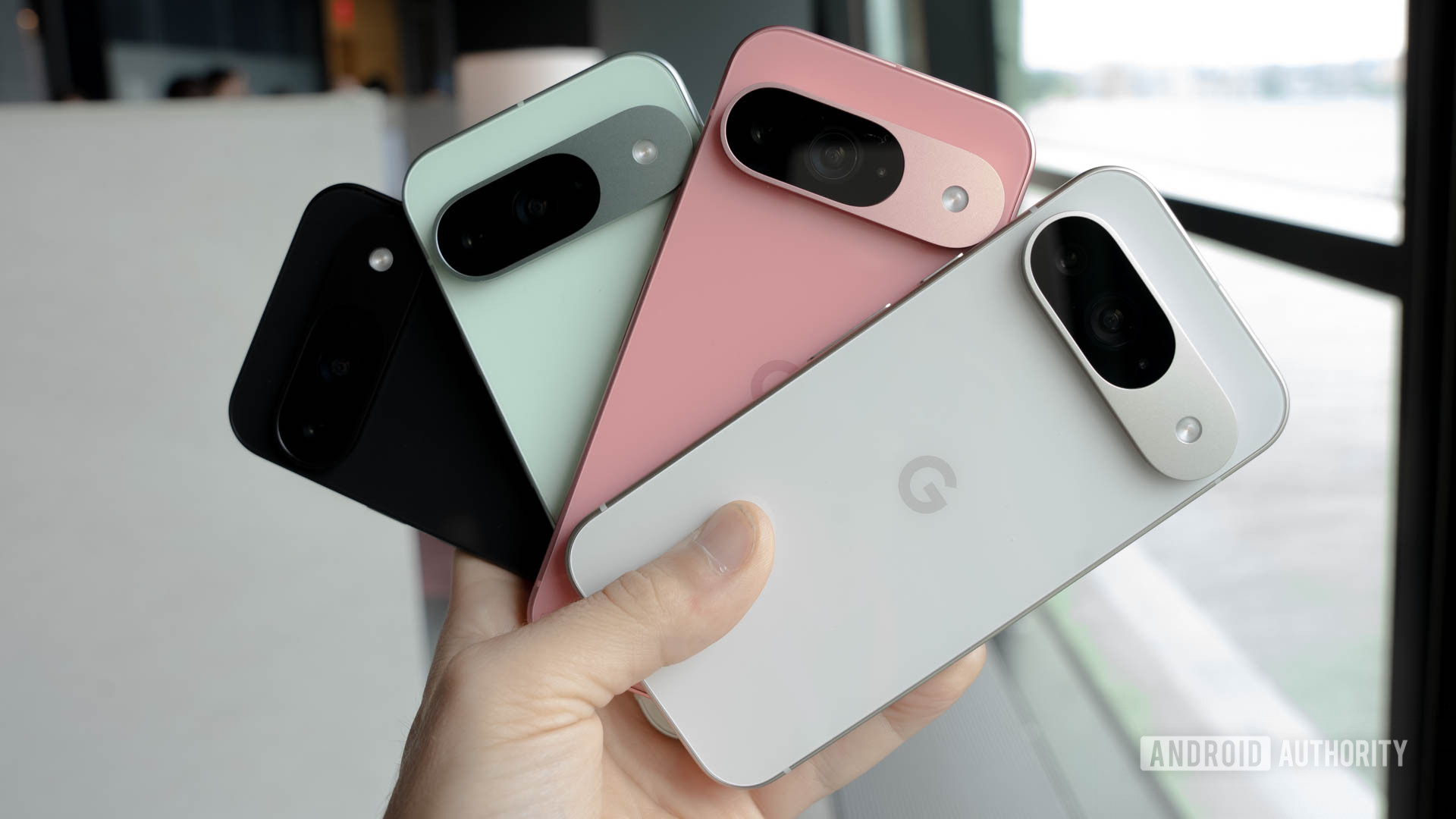
Google launched a flurry of new flagships with the Pixel 9 series, including one base model and two Pro variants. Beyond the differences in size, it may be tricky to tell the three apart from afar, but this guide aims to demystify them. Read on for our Pixel 9 vs 9 Pro vs 9 Pro XL comparison.
Google Pixel 9 vs 9 Pro vs 9 Pro XL: At a glance
The Pixel 9 series is aesthetically similar, but several important differences exist. Here are the most important to note.
- The Pixel 9 and 9 Pro have similar body sizes but are much smaller than the Pixel 9 Pro XL.
- Beyond the battery, dimensions, and screen sizes, the Pixel 9 Pro and 9 Pro XL are fundamentally the same device.
- The Pixel 9 Pro and Pro XL feature LTPO displays; the Pixel 9 does not.
- The Pixel 9 Pro and Pro XL offer triple camera systems, while the base Pixel 9 settles for two.
- Google's 9 Pro XL offers the fastest wired and wireless charging speeds.
- The Pixel 9 Pro XL is the most expensive of the three.

Gorgeous display
Seven years of software updates

Excellent build quality
Flexible, capable cameras
Reliable update commitment

Excellent build quality, refined design
Extensive update policy
Google Pixel 9 vs 9 Pro vs 9 Pro XL: Sizes, colors, and displays
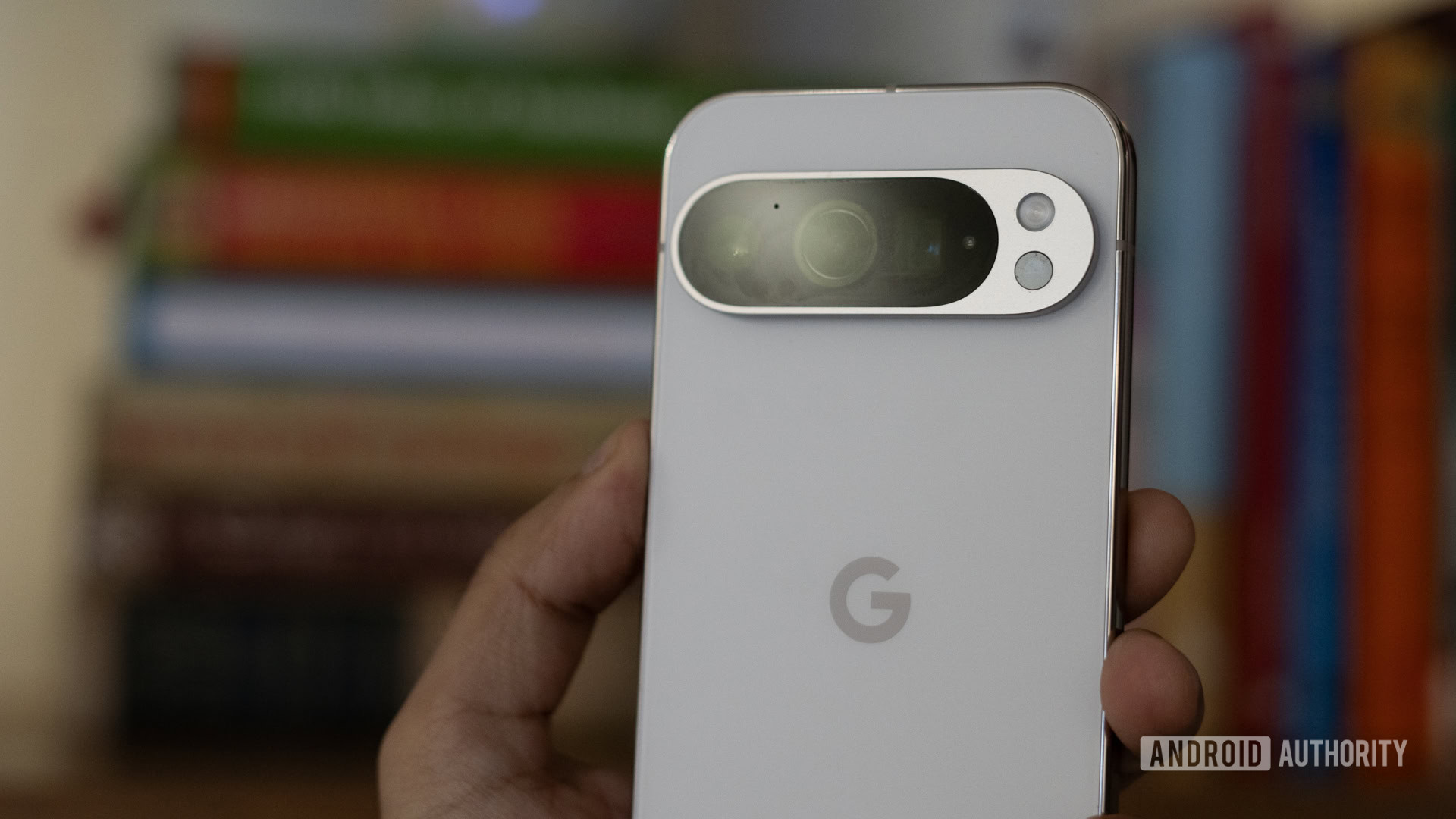
| Pixel 9 | Pixel 9 Pro | Pixel 9 XL | |
|---|---|---|---|
Dimensions and weight | Pixel 9 152.8 x 72.0 x 8.5mm 198g | Pixel 9 Pro 152.8 x 72.0 x 8.5mm 199g | Pixel 9 XL 162.8 x 76.6 x 8.5mm 221g |
Durability and materials | Pixel 9 Corning Gorilla Glass Victus 2 front and polished back Satin finish aluminum frame IP68 rating | Pixel 9 Pro Corning Gorilla Glass Victus 2 front and matte back Polished finish aluminum frame IP68 rating | Pixel 9 XL Corning Gorilla Glass Victus 2 front and matte back Polished finish aluminum frame IP68 rating |
Displays | Pixel 9 6.3-inch Actua OLED 20:9 aspect ratio 1080 x 2424 resolution 422 PPI 60-120Hz refresh rate Brightness: 1800 nits (HDR) 2700 nits (peak) HDR support | Pixel 9 Pro 6.3-inch Super Actua LTPO OLED 20:9 aspect ratio 1280 x 2856 resolution 495 PPI 1-120Hz refresh rate Brightness: 2000 nits (HDR) 3000 nits (peak) HDR support | Pixel 9 XL 6.8-inch Super Actua LTPO OLED 20:9 aspect ratio 1344 x 2992 resolution 486 PPI 1-120Hz refresh rate Brightness: 2000 nits (HDR) 3000 nits (peak) HDR support |
Sensors | Pixel 9 Proximity sensor Ambient light sensor Accelerometer Gyrometer Magnetometer Barometer | Pixel 9 Pro Proximity sensor Ambient light sensor Accelerometer Gyrometer Magnetometer Barometer Temperature sensor | Pixel 9 XL Proximity sensor Ambient light sensor Accelerometer Gyrometer Magnetometer Barometer Temperature sensor |
Colorways | Pixel 9 Obsidian Porcelain Wintergreen Peony | Pixel 9 Pro Obsidian Porcelain Hazel Rose Quartz | Pixel 9 XL Obsidian Porcelain Hazel Rose Quartz |
Before we tuck into the differences, let’s examine the aesthetic similarities across the Pixel 9 series. All three models receive physical nips and tucks, most notably to the iconic camera bar. Gone is the Pixel 8’s retro-future array, and in comes a cleaner, sharper camera pill design. The new camera bump protrudes considerably on all three models, but the 9 Pro and 9 Pro XL’s house an additional camera.
All three models extensively use Corning’s Gorilla Glass Victus 2 front and back, but while the Pro duo offers a matte rear finish and polished edges, the Pixel 9 has a polished rear and a “satin” finish on its edges. Either way, all three models pack an IP68 water and dust protection rating. You will want to grab a Pixel 9 and Pixel 9 Pro case or a Pixel 9 Pro XL case, though. Although they’re durable, you should always protect your investment.
The Pixel 9 and the Pixel 9 Pro are actually the same size, even though the latter is 1g heavier. This also means the Pixel 9 and Pixel 9 Pro both employ 6.3-inch displays. However, when it comes to display tech, the Pixel 9 Pro and Pro XL offer 1-120Hz refresh rates, higher HDR and peak brightness, and more pixels per inch thanks to their higher resolution. The Pixel 9 settles for a less sophisticated 60-120Hz OLED.
All three models receive physical nips and tucks, most notably to the iconic camera bar.
As its name suggests, the Pixel 9 Pro XL is the largest of the three models. It’s 10mm taller and 4.6mm wider than the Pixel 9 and Pixel 9 Pro, even though all three devices share their 8.5mm thickness. The larger phone is also 22g heavier than its namesake and packs the highest resolution of the three. The Pixel 9 Pro offers a denser panel than the Pixel 9 Pro XL (495 vs 486 PPI), although both panels pack LTPO tech.
Beyond hard specs, the Pixel 9 offers an attractive color palette. Obsidian and Porcelain are common across all three models, but the base device can also be had in Wintergreen and Peony. The two Pro models share Hazel and Rose Quartz as their tertiary choices.
Finally, there’s one significant difference in the sensor department. Only the Pro models include a temperature sensor, a gimmick that debuted on the Pixel 8 Pro. All three models pack an ultrasonic fingerprint sensor beneath their displays, which should make unlocking the new crop of Google phones much easier.
Google Pixel 9 vs 9 Pro vs 9 Pro XL: Core specs
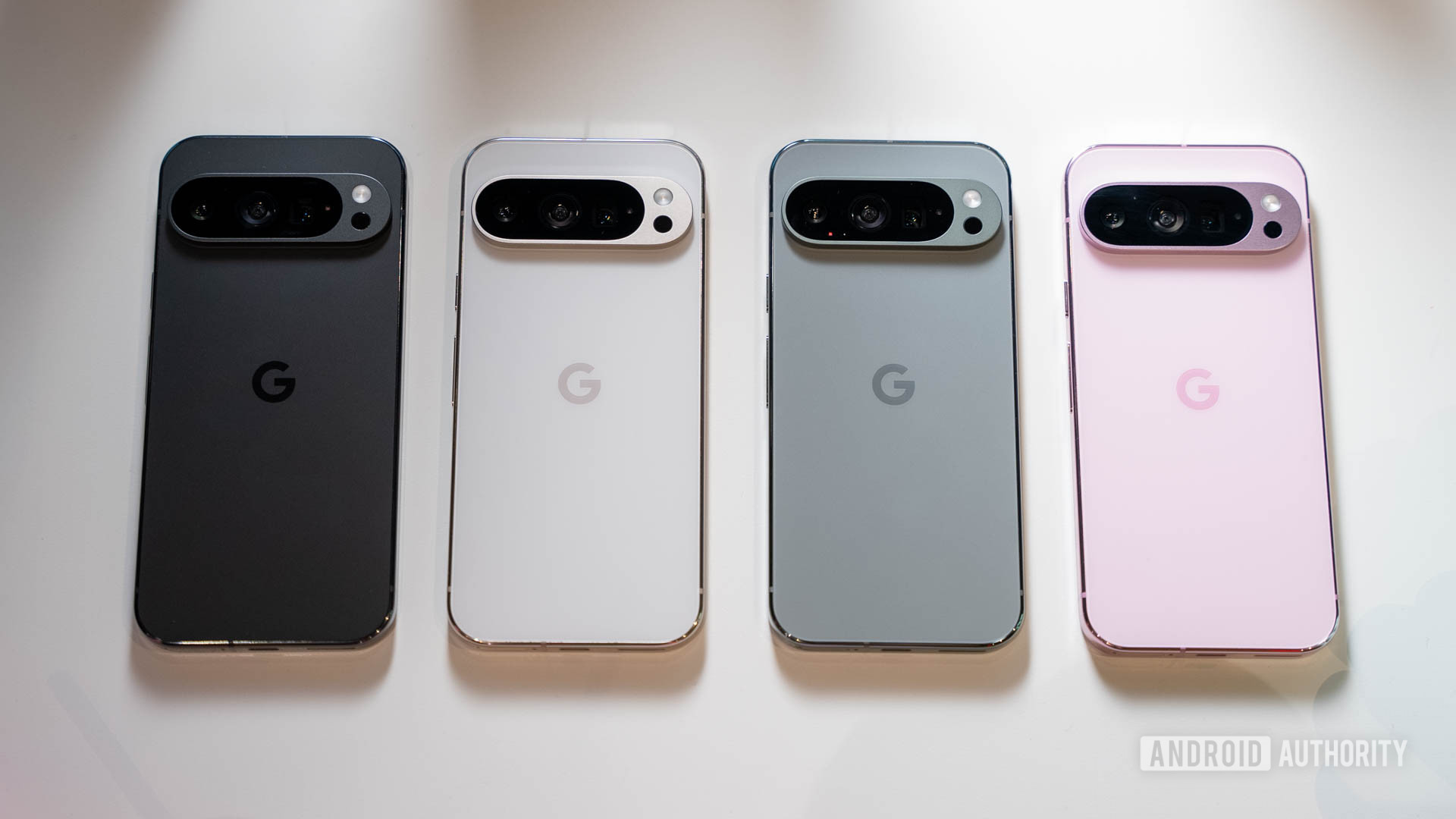
| Pixel 9 | Pixel 9 Pro | Pixel 9 XL | |
|---|---|---|---|
Chipset | Pixel 9 Google Tensor G4 Titan M2 security coprocessor | Pixel 9 Pro Google Tensor G4 Titan M2 security coprocessor | Pixel 9 XL Google Tensor G4 Titan M2 security coprocessor |
RAM and storage | Pixel 9 12GB RAM 128/256GB storage | Pixel 9 Pro 16GB RAM 128/256/512GB/1TB storage | Pixel 9 XL 16GB RAM 128/256/512GB/1TB storage |
Connectivity (US) | Pixel 9 Wi-Fi 7 (802.11be) 2.4GHz+5GHz+6GHz 2x2+2x2 MIMO Bluetooth 5.3 NFC Google Cast Dual-band GNSS (GPS, GLONASS, Galileo) 5G mmWave + sub-6GHz No UWB support | Pixel 9 Pro Wi-Fi 7 (802.11be) 2.4GHz+5GHz+6GHz 2x2+2x2 MIMO Bluetooth 5.3 NFC Google Cast Dual-band GNSS (GPS, GLONASS, Galileo) 5G mmWave + sub-6GHz UWB | Pixel 9 XL Wi-Fi 7 (802.11be) 2.4GHz+5GHz+6GHz 2x2+2x2 MIMO Bluetooth 5.3 NFC Google Cast Dual-band GNSS (GPS, GLONASS, Galileo) 5G mmWave + sub-6GHz UWB |
Other features | Pixel 9 Satellite SOS (US only) Emergency SOS Crisis Alerts Car Crash Detection Safety Check Emergency Location Service Emergency Contacts & Medical Info Android Earthquake Alerts System | Pixel 9 Pro Satellite SOS (US only) Emergency SOS Crisis Alerts Car Crash Detection Safety Check Emergency Location Service Emergency Contacts & Medical Info Android Earthquake Alerts System | Pixel 9 XL Satellite SOS (US only) Emergency SOS Crisis Alerts Car Crash Detection Safety Check Emergency Location Service Emergency Contacts & Medical Info Android Earthquake Alerts System |
Like the Pixel lines before it, the Pixel 9 series trio shares plenty of common internal traits, chief of which is the Tensor G4 chipset. The new silicon is a minor refresh of the Tensor G3, with rearranged cores pushing a few more Hz and the return of the Titan M2 security core. Thanks to this base platform, all three phones offer the same connectivity and location chops, although the Pixel 9 misses out on UWB support.
The Pro duo naturally offer tastier features for power users and those seeking more from their mobiles. Although the Pixel 9 series sees a considerable RAM bump across the board owing to Google’s AI ambitions, the Pixel 9 Pro and XL have 16GB to play with. The base model settles for a still impressive 12GB.
As the name suggests, the Pro duo naturally offer tastier features for power users and those seeking more from their mobiles.
Storage options are also more expansive for Pro shoppers. Four configs span 128GB at the lower end and 1TB for the priciest model. The Pixel 9 only offers 128GB or 256GB of storage. None of the phones feature microSD card expansion slots.
As for connectivity, all three phones support Wi-Fi 7 in regions beyond India, Bluetooth 5.3, 5G mmWave, and sub-6GHz in supported regions. If you find yourself in a pickle, the Pixel 9 trio also debuts with Satellite SOS for US buyers, in addition to Car Crash Detection, Emergency SOS, and other core safety features.
Google Pixel 9 vs 9 Pro vs 9 Pro XL: Batteries and charging
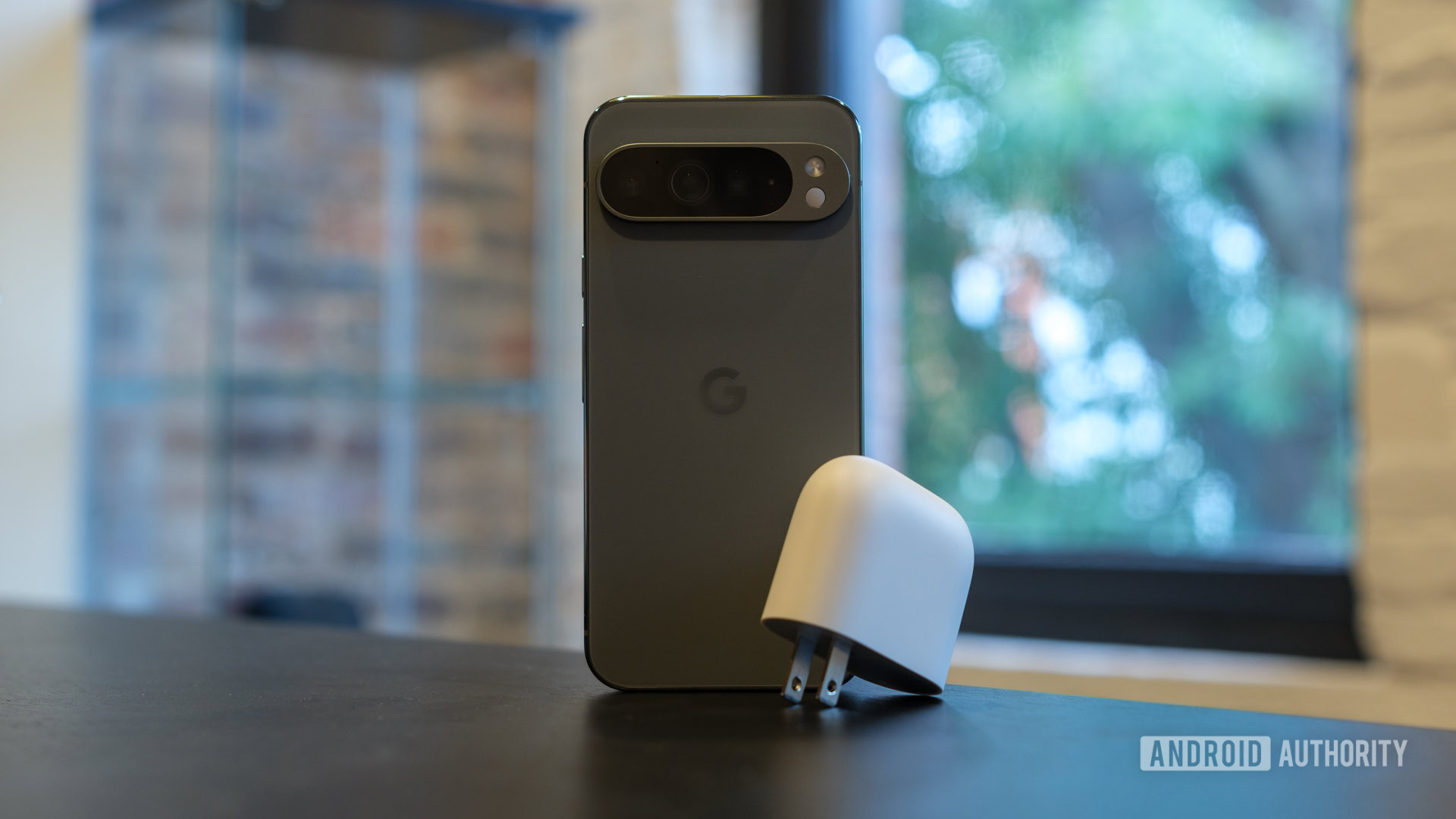
| Pixel 9 | Pixel 9 Pro | Pixel 9 XL | |
|---|---|---|---|
Battery capacity | Pixel 9 4,700mAh | Pixel 9 Pro 4,700mAh | Pixel 9 XL 5,060mAh |
Max wired charging and features | Pixel 9 27W Up to 55% in about 30 minutes using Google 45W USB-C Charger | Pixel 9 Pro 27W Up to 55% in about 30 minutes using Google 45W USB-C Charger | Pixel 9 XL 37W Up to 70% in about 30 minutes using Google 45W USB-C Charger |
Max wireless charging and features | Pixel 9 15W with Pixel Stand (Gen 2) Up to 12W with Qi-certified EPP chargers Battery Share | Pixel 9 Pro 21W with Pixel Stand (Gen 2) Up to 12W with Qi-certified EPP chargers Battery Share | Pixel 9 XL 23W with Pixel Stand (Gen 2) Up to 12W with Qi-certified EPP chargers Battery Share |
Charger in the box? | Pixel 9 No | Pixel 9 Pro No | Pixel 9 XL No |
If battery size and charging speed are of utmost importance to you, the Pixel 9 Pro XL is your model. It packs a 5,060mAh battery and supports 37W wired and 23W wireless charging. That’s the best cocktail of the three phones.
The Pixel 9 and Pixel 9 Pro both use a 4,700mAh battery, presumably because they share body shells. Nevertheless, the Pixel 9 Pro offers a faster wireless charging speed at 21W, even though it shares a wired charging speed with the Pixel 9 (27W). Interestingly, Google suggests that all three phones will go beyond 100 hours between charges when Extreme Battery Saver is activated.
Notably, all three devices only support 12W wireless charging speed when used with a Qi-certified EPP charger. To extract the most from the air, you’ll need the Pixel Stand (Gen 2).
Google Pixel 9 vs 9 Pro vs 9 Pro XL: Cameras
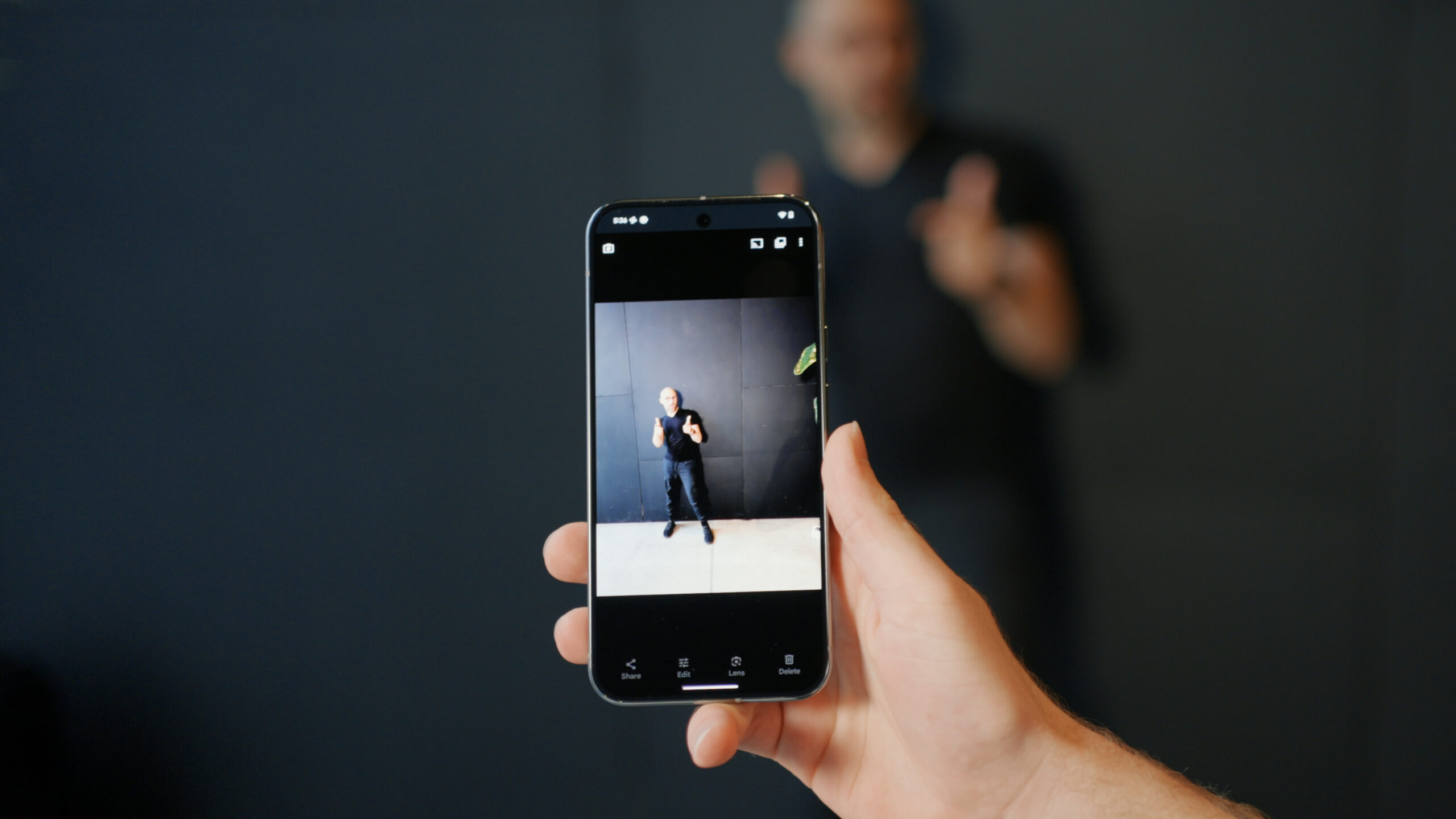
| Pixel 9 | Pixel 9 Pro | Pixel 9 XL | |
|---|---|---|---|
Main camera | Pixel 9 50MP ƒ/1.68 aperture 82° field of view 1/1.31" image sensor size OIS + EIS | Pixel 9 Pro 50MP ƒ/1.68 aperture 82° field of view 1/1.31"" image sensor size OIS + EIS | Pixel 9 XL 50MP ƒ/1.68 aperture 82° field of view 1/1.31"" image sensor size OIS + EIS |
Ultrawide camera | Pixel 9 48MP ƒ/1.7 aperture 123° field of view 1/2.55" image sensor size AF | Pixel 9 Pro 48MP ƒ/1.7 aperture 123° field of view 1/2.55" image sensor size AF | Pixel 9 XL 48MP ƒ/1.7 aperture 123° field of view 1/2.55" image sensor size AF |
Telephoto camera | Pixel 9 No dedicated telephoto lens Main camera offers Super Res Zoom up to 8x | Pixel 9 Pro 48MP ƒ/2.8 aperture 22° field of view 1/2.55" image sensor size 5x optical zoom Super Res Zoom up to 30x OIS + EIS | Pixel 9 XL 48MP ƒ/2.8 aperture 22° field of view 1/2.55" image sensor size 5x optical zoom Super Res Zoom up to 30x OIS + EIS |
Other sensors | Pixel 9 Single-zone LDAF Spectral and flicker sensor | Pixel 9 Pro Multi-zone LDAF Spectral and flicker sensor | Pixel 9 XL Multi-zone LDAF Spectral and flicker sensor |
Selfie camera | Pixel 9 10.5MP ƒ/2.2 aperture 95° field of view AF | Pixel 9 Pro 42MP ƒ/2.2 aperture 103° field of view AF | Pixel 9 XL 42MP ƒ/2.2 aperture 103° field of view AF |
Video modes | Pixel 9 Rear: 4K at 24/30/60fps 1080p at 24/30/60fps Dual exposure on main camera Digital video zoom up to 7x Front: 4K at 30/60fps | Pixel 9 Pro Rear: 8K at 30fps (Video Boost) 4K at 24/30/60fps 1080p at 24/30/60fps Dual exposure on main camera Super Res Zoom Video up to 20x Front: 4K at 30/60fps | Pixel 9 XL Rear: 8K at 30fps (Video Boost) 4K at 24/30/60fps 1080p at 24/30/60fps Dual exposure on main camera Super Res Zoom Video up to 20x Front: 4K at 30/60fps |
There’s plenty of camera hardware overlap across the three devices. The Pixel 9, Pixel 9 Pro, and Pixel 9 Pro XL all utilize the same 50MP primary and 48MP ultrawide cameras. The latter is a considerable upgrade for the base model, as its predecessor used a 12MP sensor with a smaller aperture and narrower field-of-view (FoV). However, you’ll be left wanting if you were hoping for a third lens on the Pixel 9.
Only the Pixel 9 Pro and Pixel 9 Pro XL feature a dedicated telephoto snapper with a 48MP sensor and a 5x optical zoom range. Google also touts its Super Res Zoom feature, which extends this to 30x through software magic. Notably, the Pixel 9 can also use this feature through its primary camera but only offers 8x of digital reach. Other notable camera software omissions from the base Pixel 9 model include the lack of Pro controls, no High-Res support, and no Zoom Enhance.
Only the Pixel 9 Pro and Pixel 9 Pro XL feature a dedicated telephoto snapper.
There’s another marked difference between the Pixel 9’s selfie camera and its Pro siblings. The cheaper model packs a 10.5MP selfie snapper with a narrower 95-degree FoV compared to the 42MP sensor with a 103-degree FoV on the Pro duo.
As for video, both Pro models can effectively record in 8K at 30fps thanks to the Video Boost AI post-processing smarts available to them, while the Pixel 9 settles for a 4K at 60fps maximum. The base model also lacks Night Sight Video and Super Res Video Zoom.
Google Pixel 9 vs 9 Pro vs 9 Pro XL: Software and AI features
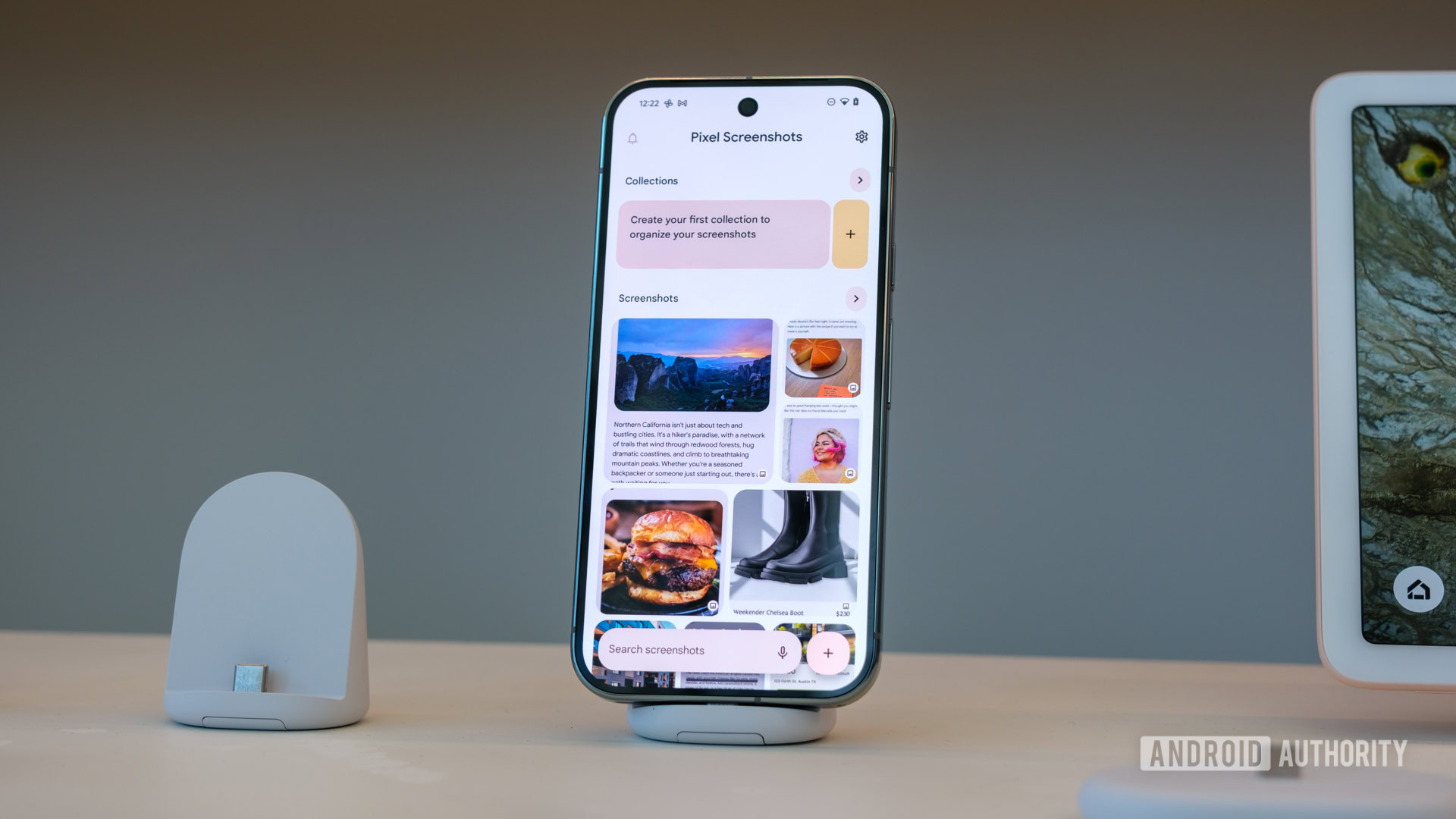
On a software level, all three devices launched with Android 14, not Android 15, but all devices have since received the latter version of the OS. The trio also receives a similar software promise, with Google guaranteeing seven years of OS upgrades, software updates, and Pixel Feature drops. Generally, the Pro line gets new features before the base model, so expect that to be the case again.
The Pixel 9 Pro and Pixel 9 Pro XL gain access to Gemini Advanced through a Google One AI Premium Plan trial.
As detailed in the section above, the Pixel 9 lacks several camera and video modes you’ll find on the Pro duo, but the discrepancies don’t end there. The Pixel 9 Pro and Pixel 9 Pro XL gain access to Gemini Advanced through a Google One AI Premium Plan trial, offering the premium version of Google’s AI model free for a year alongside 2TB of cloud storage.
Nevertheless, plenty of new software features are coming to all three models, including Pixel Screenshots. The feature allows users to save important information they need help remembering through screenshots. Using AI, the phone will save, organize, and recall the saved data when prompted.
Google Pixel 9 vs 9 Pro vs 9 Pro XL: Which should you buy?
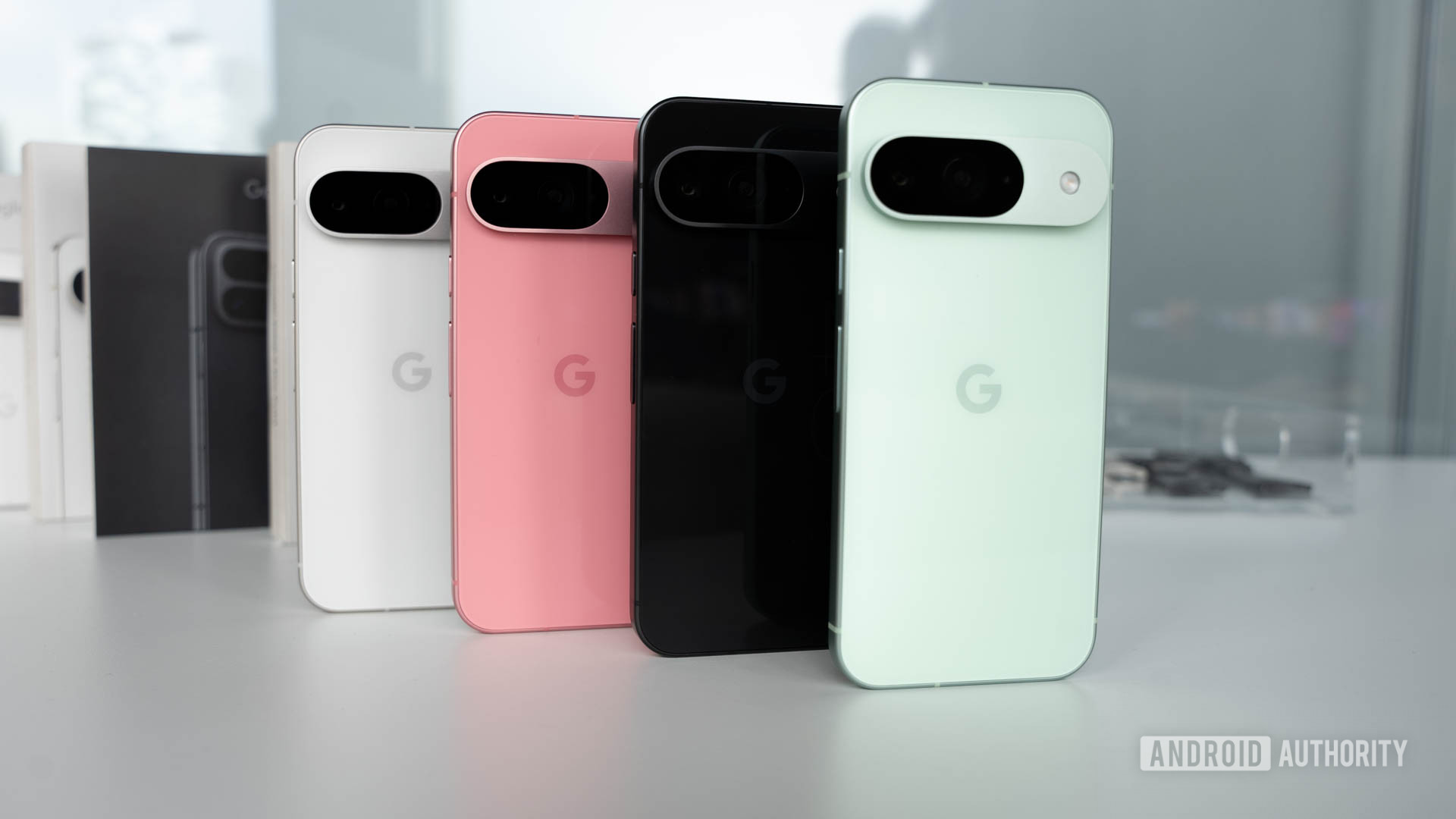
The Pixel 9 series is among the priciest Google flagships in quite some time. You’ll need at least $799 for the base model with 128GB of storage, which now places it alongside the Galaxy S25 and the OnePlus 12. For $200 more, you can grab the Pixel 9 Pro. For a larger display, bigger battery, and faster charging, you’ll need $1,099 to acquire the Pixel 9 Pro XL. That’s a $100 premium over the Pixel 9 Pro.

Gorgeous display
Seven years of software updates

Excellent build quality
Flexible, capable cameras
Reliable update commitment

Excellent build quality, refined design
Extensive update policy
So, with that in mind, which phone is best for you? The base Pixel 9 model is the cheapest entry to Google’s new flagship line. It offers the same great design as its peers and arguably wears more fetching coats of paint. It’s also the perfect upgrade path for those running older base Pixel models, giving older Samsung Galaxy S models a run for their money.
If you need more AI smarts, a more versatile camera, faster charging, and UWB support, the Pixel 9 Pro is the perfect compact alternative. It’s great that Google is catering to those who don’t want a large body and all the bells and whistles these devices usually afford. It is $200 pricier than the Pixel 9, but its trial access to Gemini Advanced, additional RAM, and upgraded LTPO display may be worth it for some.
Finally, if you’re a phablet fan, the Pixel 9 Pro XL is the natural Pixel 8 Pro successor. It’s essentially the Pixel 9 Pro with a more prominent display and roomier battery with faster charging, making it the best model on paper.
Which of the three phones do you believe is the better buy? Be sure to help your fellow readers by voting in our poll below.